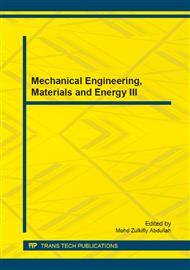p.615
p.621
p.625
p.630
p.635
p.639
p.643
p.647
p.652
Numerical Simulation Research on Improving Effect of Steam Flooding by Using High Permeability Belt
Abstract:
Development of the reservoir in A block of Liaohe Oilfield present compound rhythmreservoirs, high permeability layer among the reservoir, according to the realsituation that high permeability layer exist, for the efficient utilization of producingremaining oil by horizontal well, that need to optimize locations, trajectory, lengthof horizontal well. A fine geological model which reflects the characteristicsof the reservoir in studied area was constructed with Petrel and CMG software. Optimizelocations, trajectory, length of horizontal well and vapor injection parametersupon the history matching. The research result shows that steam override, afterreaching high permeability layer, the steam makes fast breakthrough in highpermeability layer, keeping on upward heating the reservoirs with large contactarea. Finally the reservoirs can be uniformly swept in the vertical direction. Thenumerical simulation accurately predicts the optimized horizontal well can effectiveexpoit the residual oil.
Info:
Periodical:
Pages:
635-638
Citation:
Online since:
December 2013
Authors:
Price:
Сopyright:
© 2014 Trans Tech Publications Ltd. All Rights Reserved
Share:
Citation:


